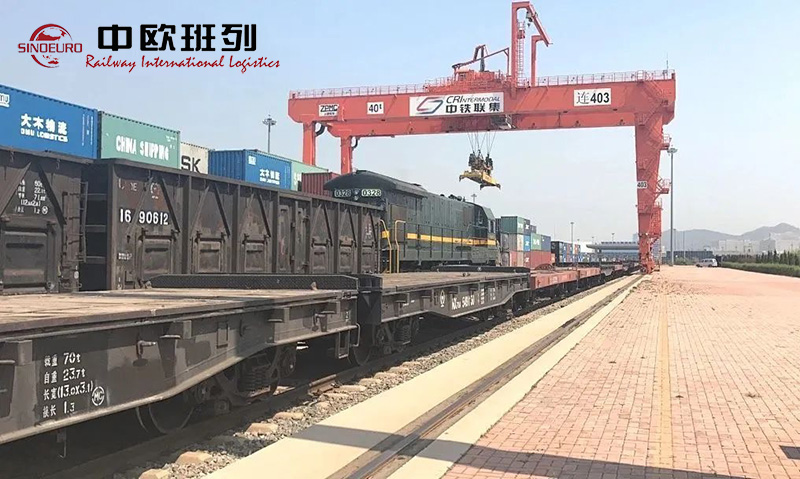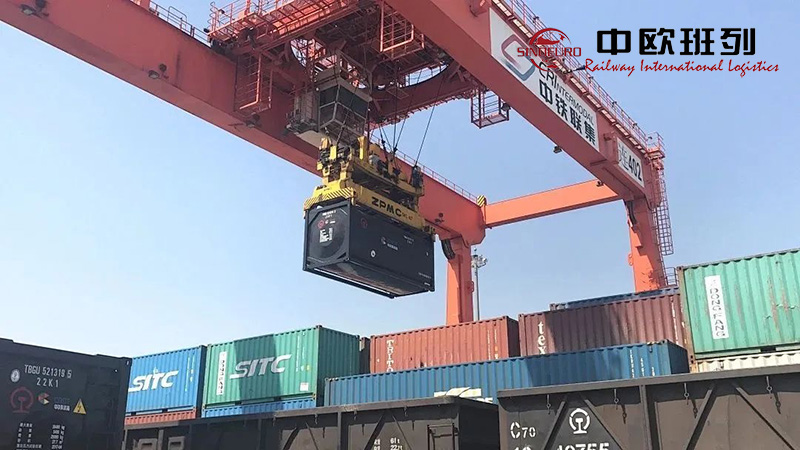In 2022, the number of China-Europe (Asia) trains in the Yangtze River Delta reached a historical high, with a total of 5063 trains operating, an increase of 668 trains from 2021, an increase of 15.2%. This achievement is a testament to the efforts and dedication of the region in promoting integrated transportation and logistics systems.
The operation of the China-Europe (Asia) trains has been a major milestone for the region. On March 30, 2022, Wuxi opened its first China-Europe connecting train, paving the way for regular operations of such trains. This development is significant, as it will enhance the region’s logistics and transportation network and drive its integrated development.
Shanghai also made great strides in the operation of the China-Europe trains, with the opening of 53 “China-Europe Train-Shanghai” trains in 2022. This is the highest number of trains operated in a single year, with over 5000 containers and a total cargo weight of 40,000 tons, valued at 1.3 billion RMB.
In Jiangsu, the China-Europe (Asia) trains set a new record with 1973 trains operating in 2022, a 9.6% increase from the previous year. The outbound trains numbered 1226, a 6.4% increase, while the inbound trains numbered 747, a 15.4% increase. The trains in the direction of Europe decreased slightly by 0.4%, while the inbound and outbound trains ratio reached 102.5%, achieving balanced development in both directions. The number of trains to Central Asia increased by 21.5%, and the trains to Southeast Asia increased by 64.3%. Nanjing operated more than 300 trains, Xuzhou operated over 400 trains, Suzhou operated over 500 trains, Lianyungang operated over 700 trains, and Hainan operated an average of 3 trains per month on the Vietnam route.
In Zhejiang, the “YiXinOu” China-Europe train platform in Yiwu operated a total of 1569 trains in 2022, transporting 129,000 standard containers, an increase of 22.8% from the previous year. The platform operates an average of 4 trains per day and more than 130 trains per month. The value of imported goods exceeded 30 billion RMB, and has maintained continuous growth for nine consecutive years with an average annual growth rate of 62%. The “YiXinOu” China-Europe train platform in Jindong operated a total of 700 trains, transporting 57,030 standard containers, a 10.2% increase from the previous year. Outbound trains numbered 484, with 39,128 standard containers, a 28.4% increase.
In Anhui, the Hefei China-Europe train operated 768 trains in 2022, an increase of 100 trains from the previous year. Since its inception, the Hefei China-Europe train has operated over 2800 trains, contributing to the region’s economic growth.
The China-Europe (Asia) trains in the Yangtze River Delta have come a long way since the first train was launched in 2013. In 2016, the number of trains operated reached 3000, and in 2021, it exceeded 10,000. The 15.2% year-on-year increase in 2022 has brought the number of trains to a historical high of 5063. The China-Europe (Asia) trains have become a powerful logistics and transportation brand with a strong radiating power, driving power,In addition to the growth in volume, the quality of service has also continued to improve. As the number of trains has increased, so has the level of efficiency and reliability. The average transit time has been reduced, while the frequency of departures has increased, giving customers more options to choose from.
Furthermore, the development of the Belt and Road Initiative has provided new opportunities for the growth of the China-Europe (Asia) Express. With the expansion of the network and the improvement of service quality, the China-Europe (Asia) Express has become an important part of the global logistics system, contributing to the development of trade and economic cooperation between China and Europe (Asia).
As we look ahead to the future, the potential for growth of the China-Europe (Asia) Express is immense. With the support of national policies, the continuous improvement of service quality, and the further expansion of the network, the China-Europe (Asia) Express will continue to play an important role in promoting the development of international logistics, boosting economic growth, and promoting cultural exchanges between countries along the Belt and Road.
In conclusion, the China-Europe (Asia) Express has made remarkable achievements in 2022, setting a new record with the opening of 5063 trains in the Yangtze River Delta region. As we celebrate this milestone, we look forward to even greater success in the future as the China-Europe (Asia) Express continues to promote economic growth and cultural exchange between China and the rest of the world.
- English
- French
- German
- Portuguese
- Spanish
- Russian
- Japanese
- Korean
- Arabic
- Irish
- Greek
- Turkish
- Italian
- Danish
- Romanian
- Indonesian
- Czech
- Afrikaans
- Swedish
- Polish
- Basque
- Catalan
- Esperanto
- Hindi
- Lao
- Albanian
- Amharic
- Armenian
- Azerbaijani
- Belarusian
- Bengali
- Bosnian
- Bulgarian
- Cebuano
- Chichewa
- Corsican
- Croatian
- Dutch
- Estonian
- Filipino
- Finnish
- Frisian
- Galician
- Georgian
- Gujarati
- Haitian
- Hausa
- Hawaiian
- Hebrew
- Hmong
- Hungarian
- Icelandic
- Igbo
- Javanese
- Kannada
- Kazakh
- Khmer
- Kurdish
- Kyrgyz
- Latin
- Latvian
- Lithuanian
- Luxembou..
- Macedonian
- Malagasy
- Malay
- Malayalam
- Maltese
- Maori
- Marathi
- Mongolian
- Burmese
- Nepali
- Norwegian
- Pashto
- Persian
- Punjabi
- Serbian
- Sesotho
- Sinhala
- Slovak
- Slovenian
- Somali
- Samoan
- Scots Gaelic
- Shona
- Sindhi
- Sundanese
- Swahili
- Tajik
- Tamil
- Telugu
- Thai
- Ukrainian
- Urdu
- Uzbek
- Vietnamese
- Welsh
- Xhosa
- Yiddish
- Yoruba
- Zulu




 QQ Service
QQ Service